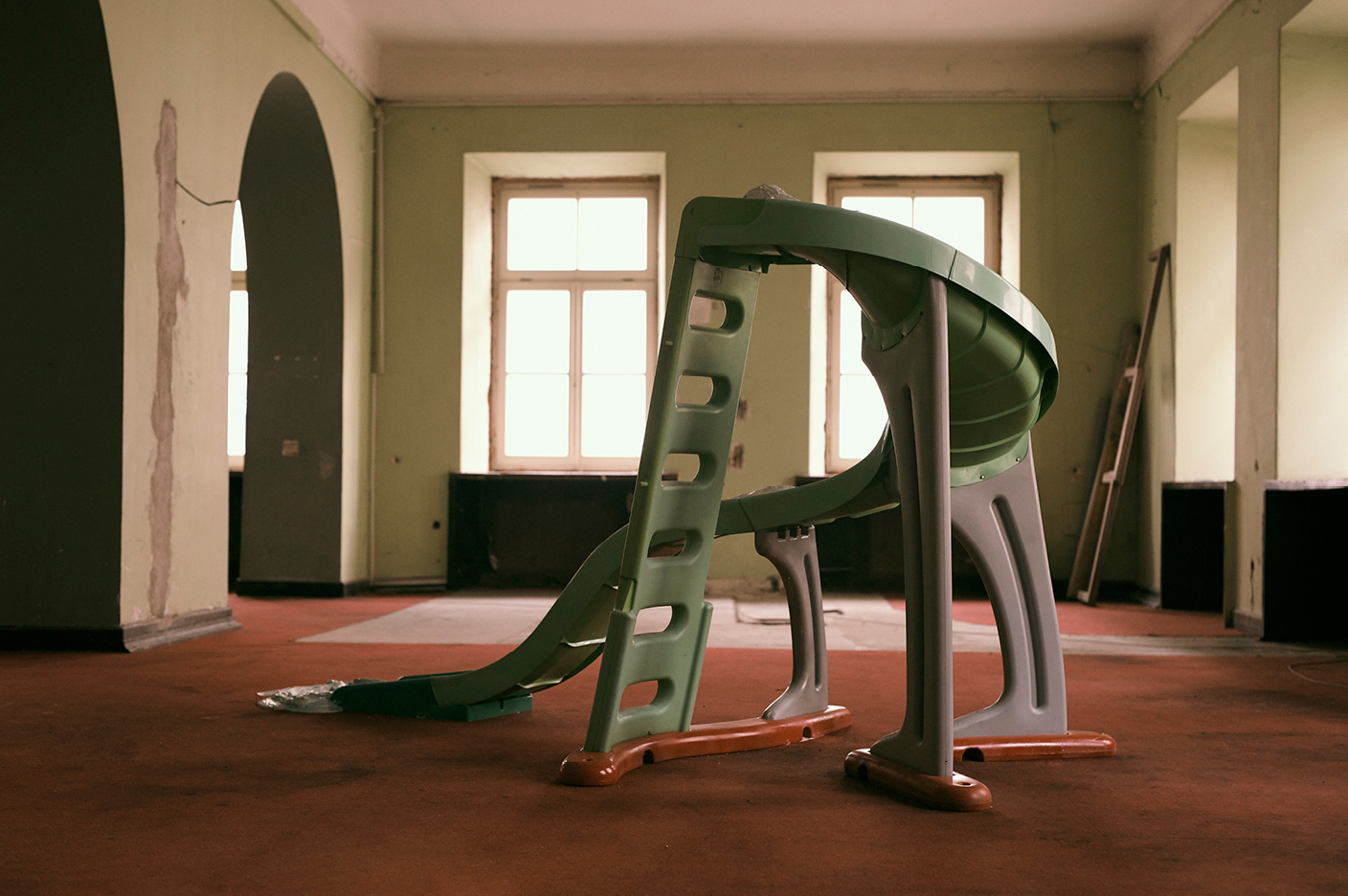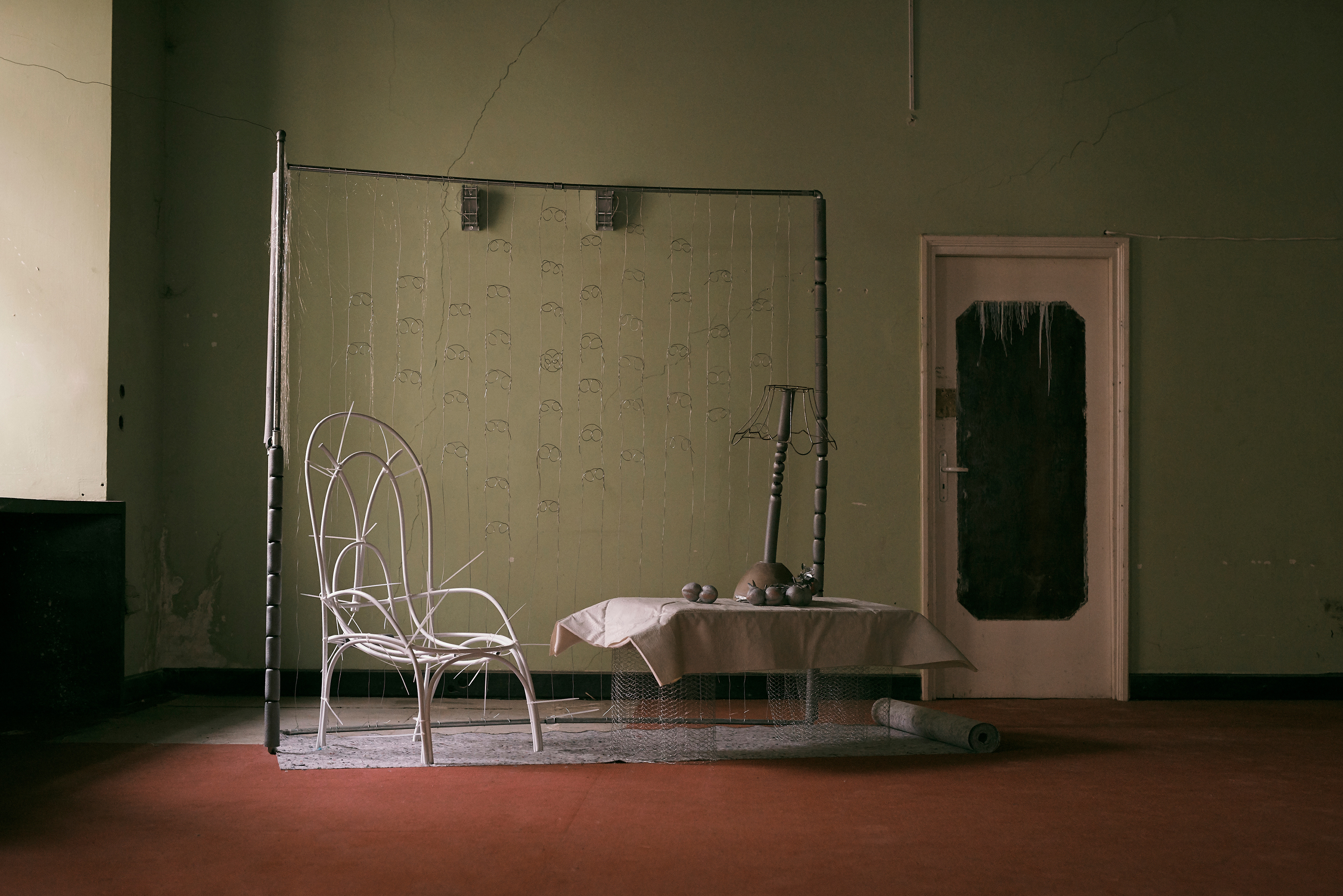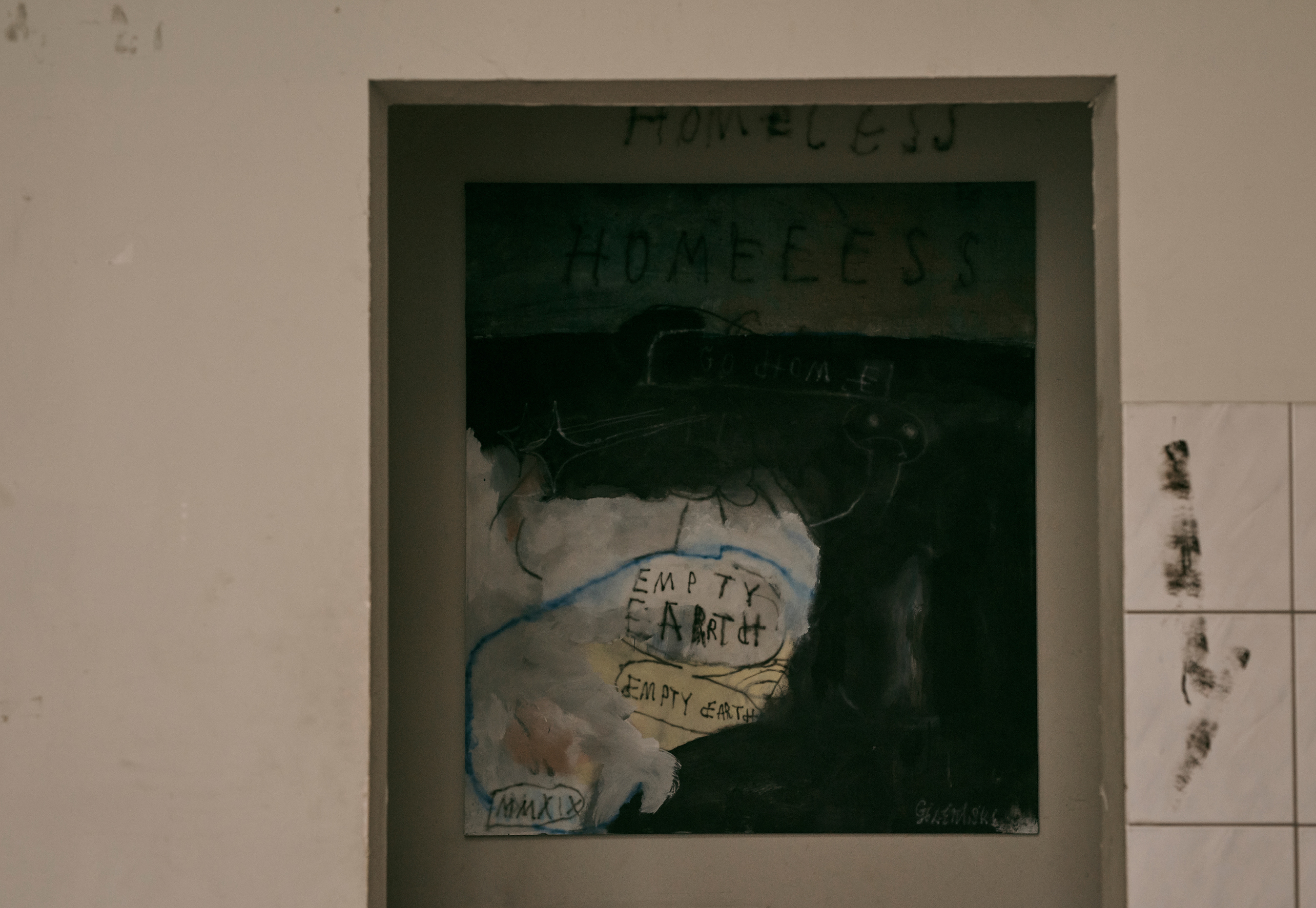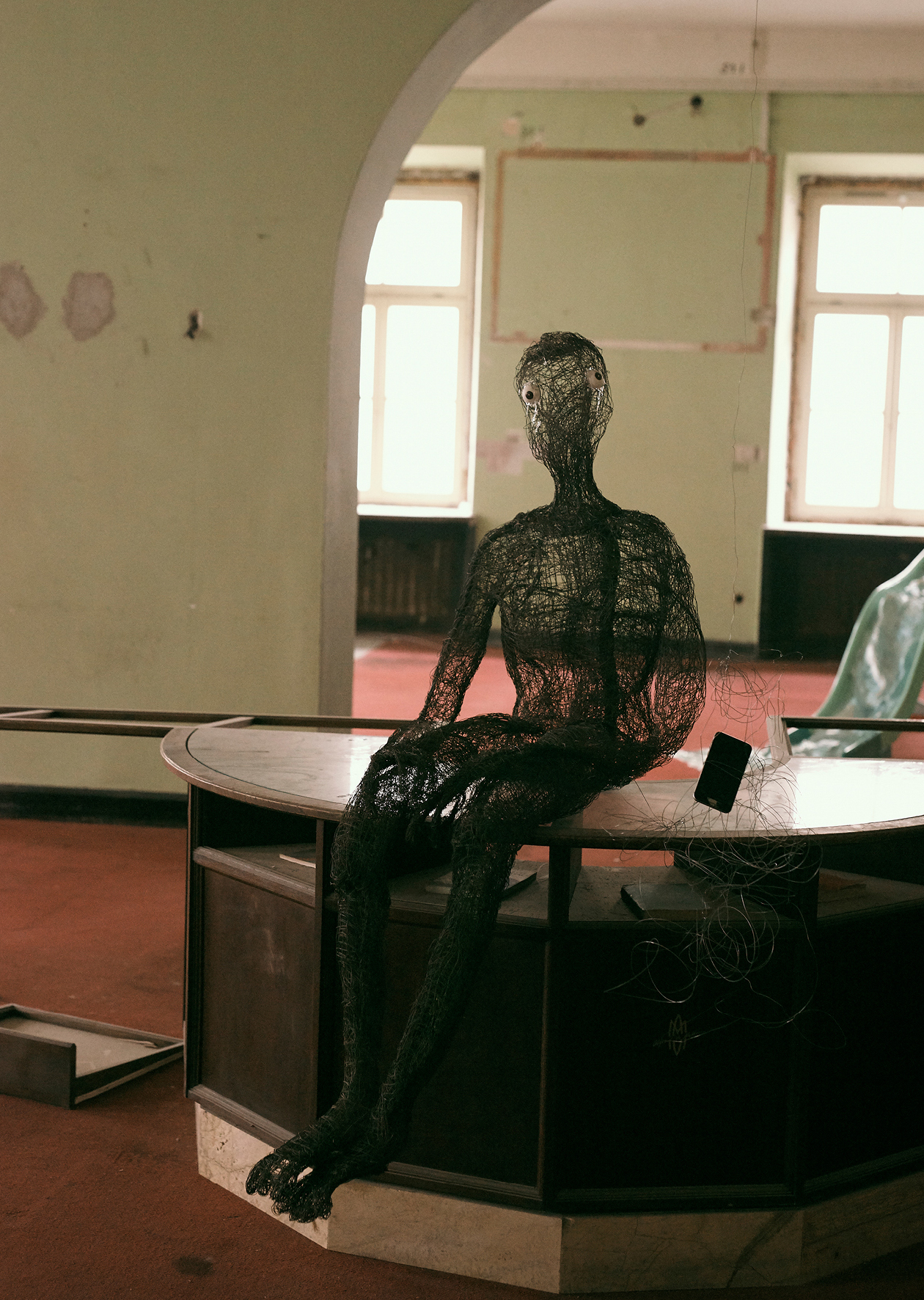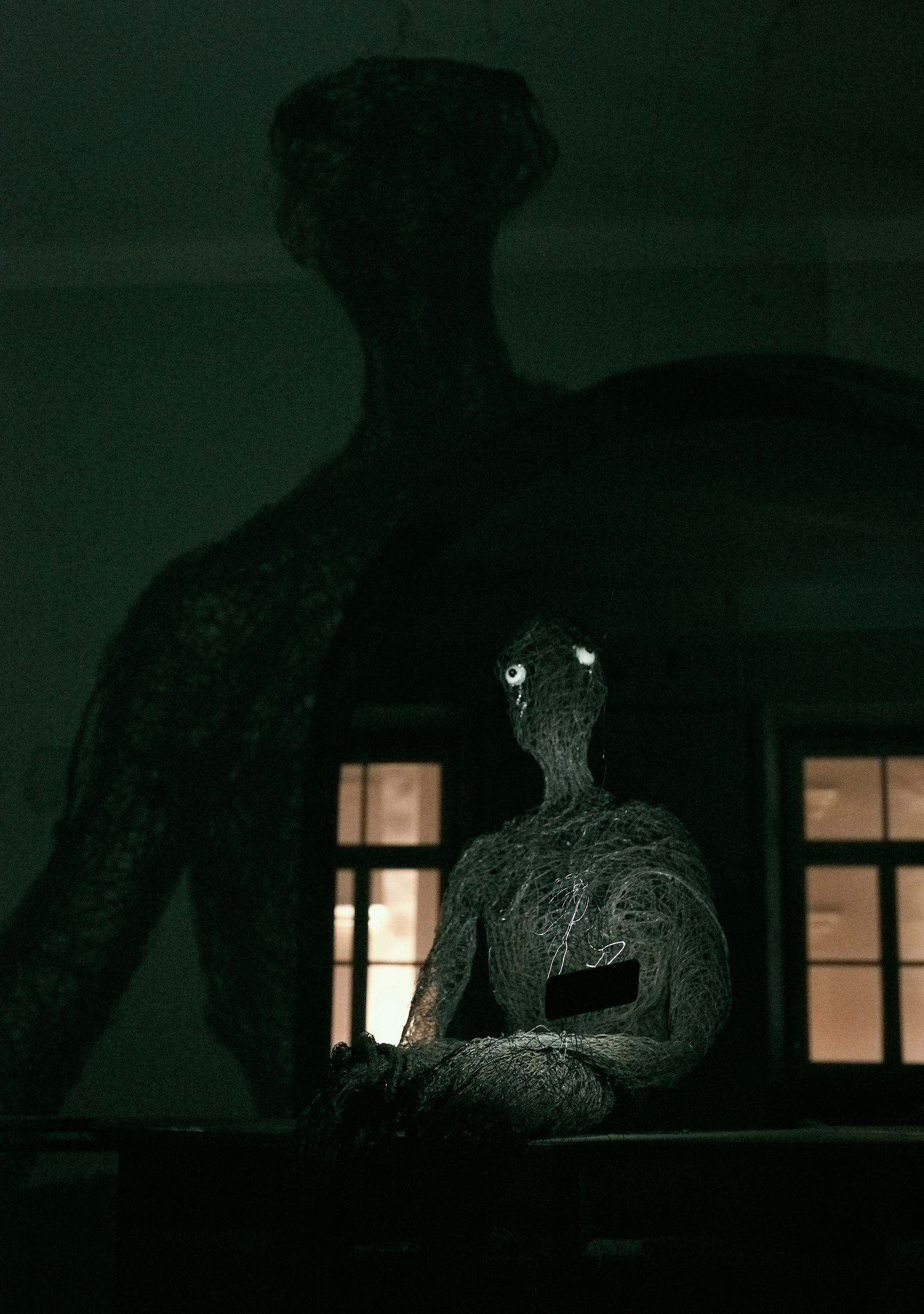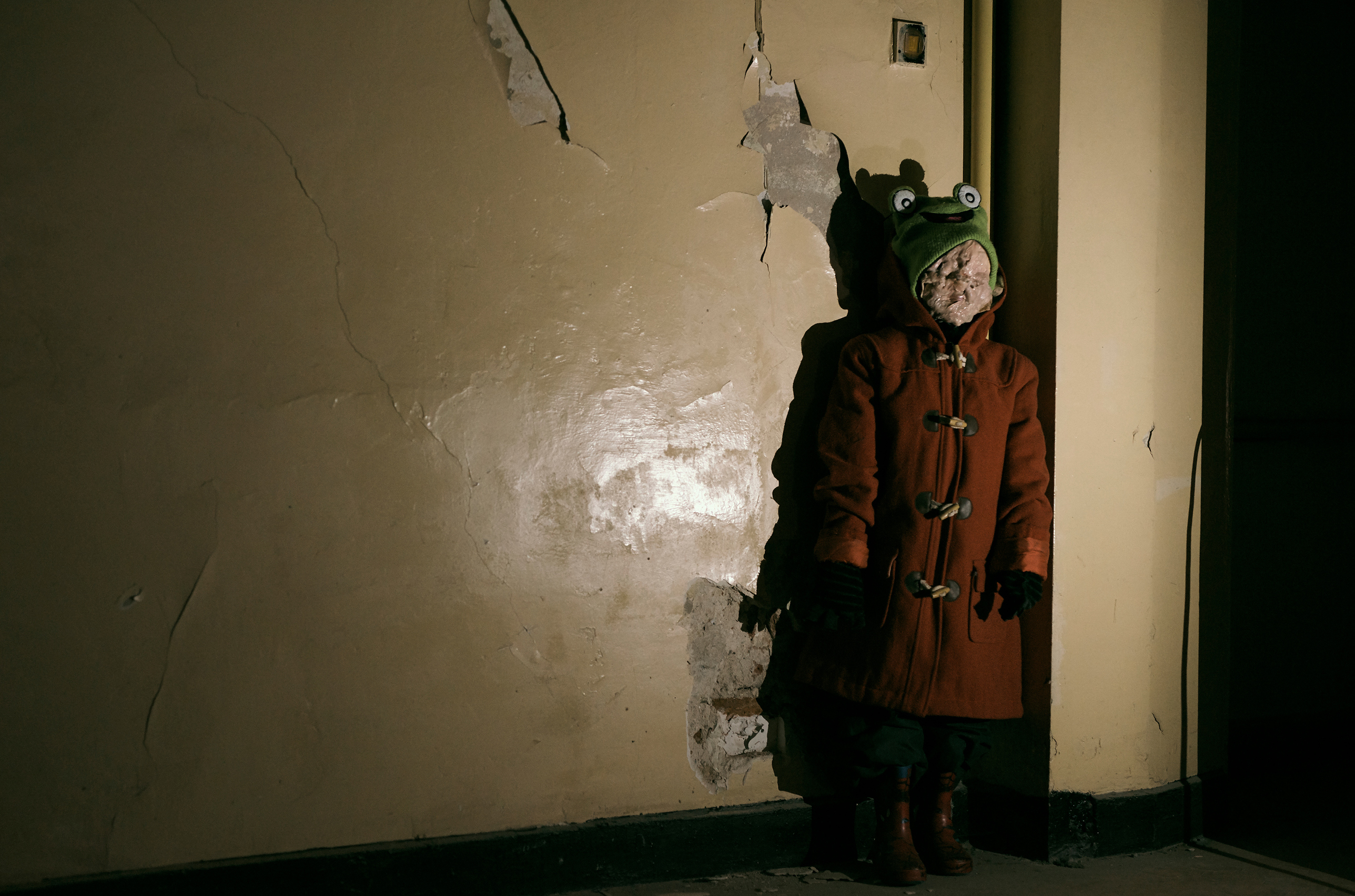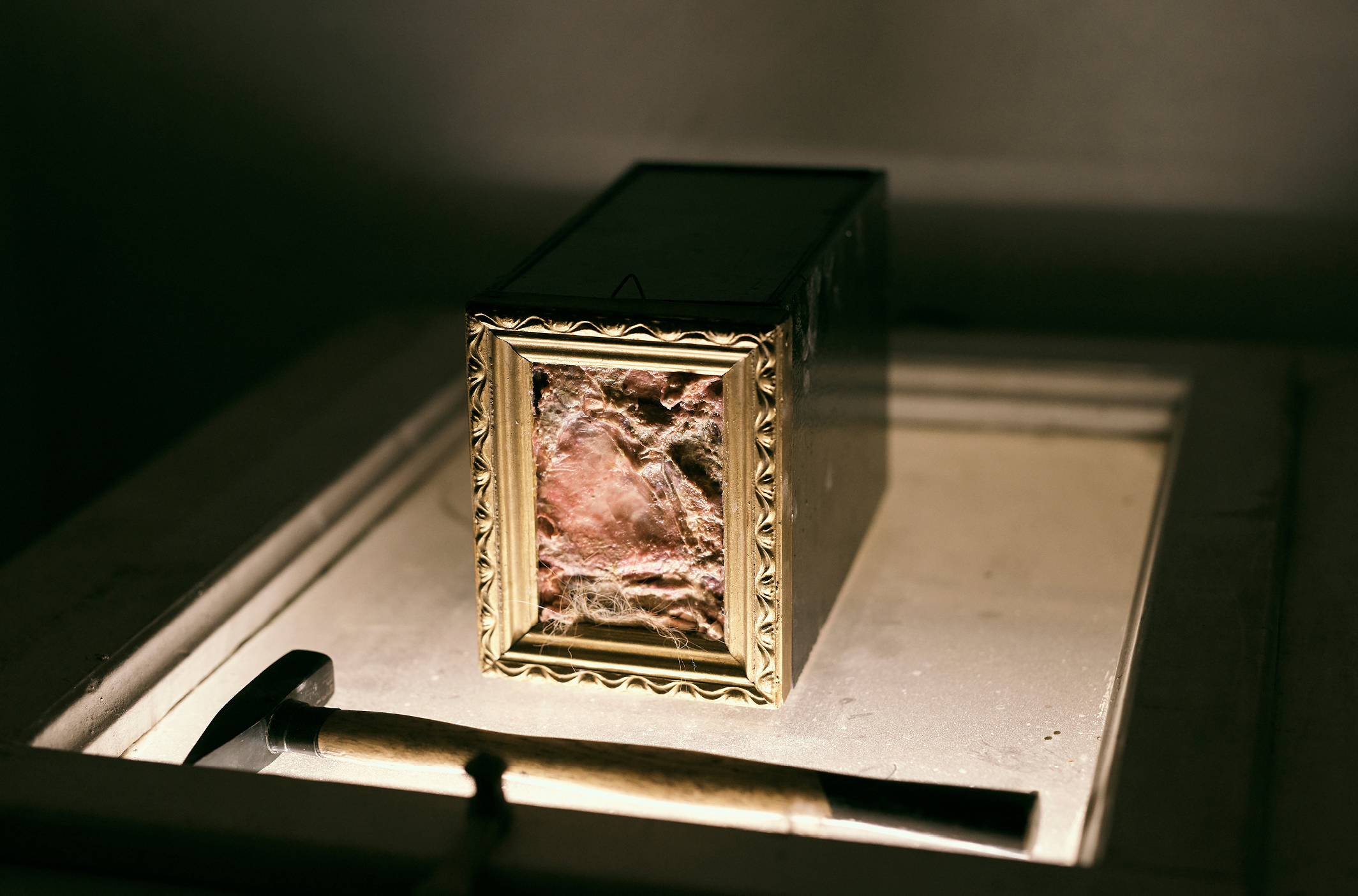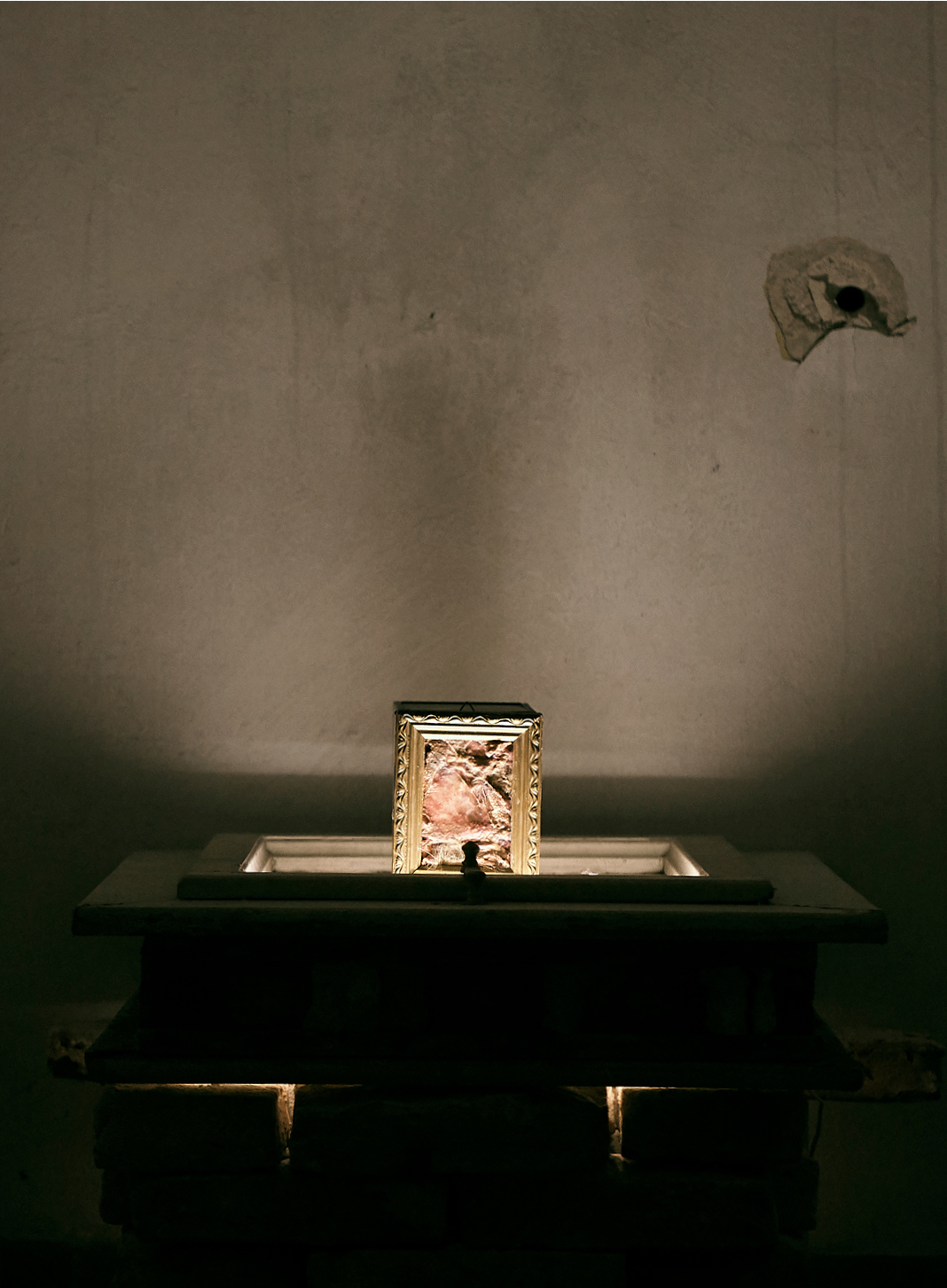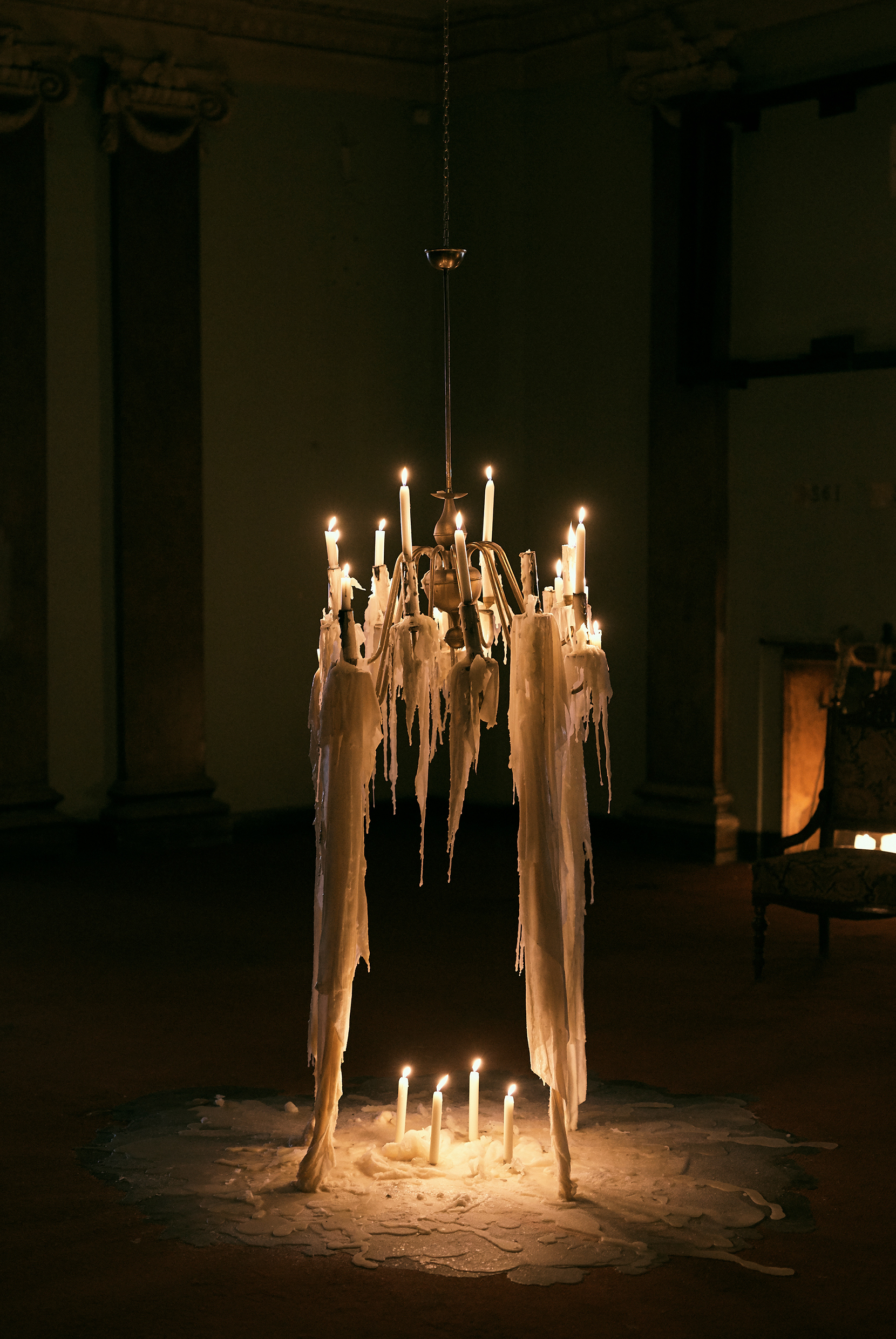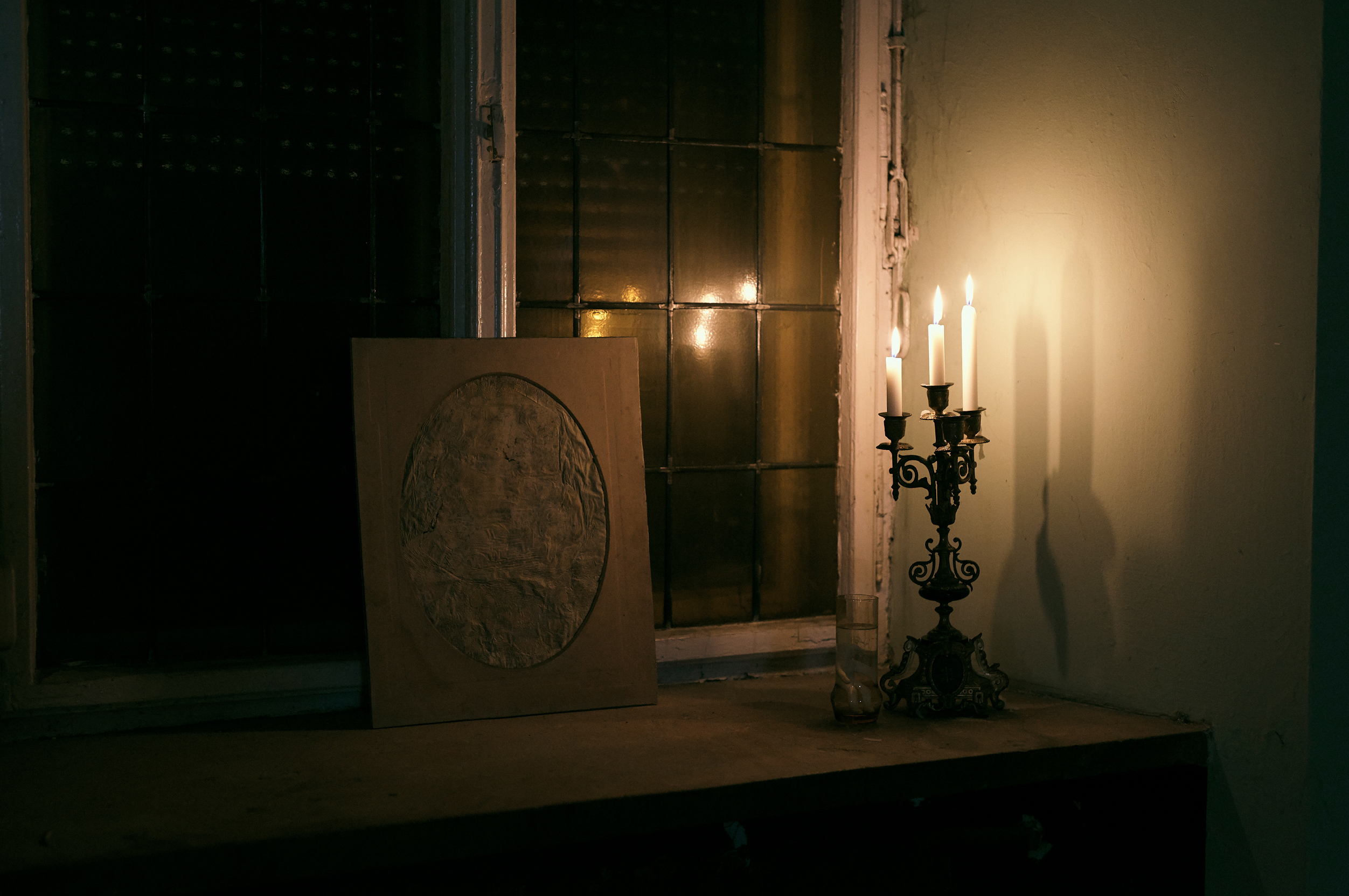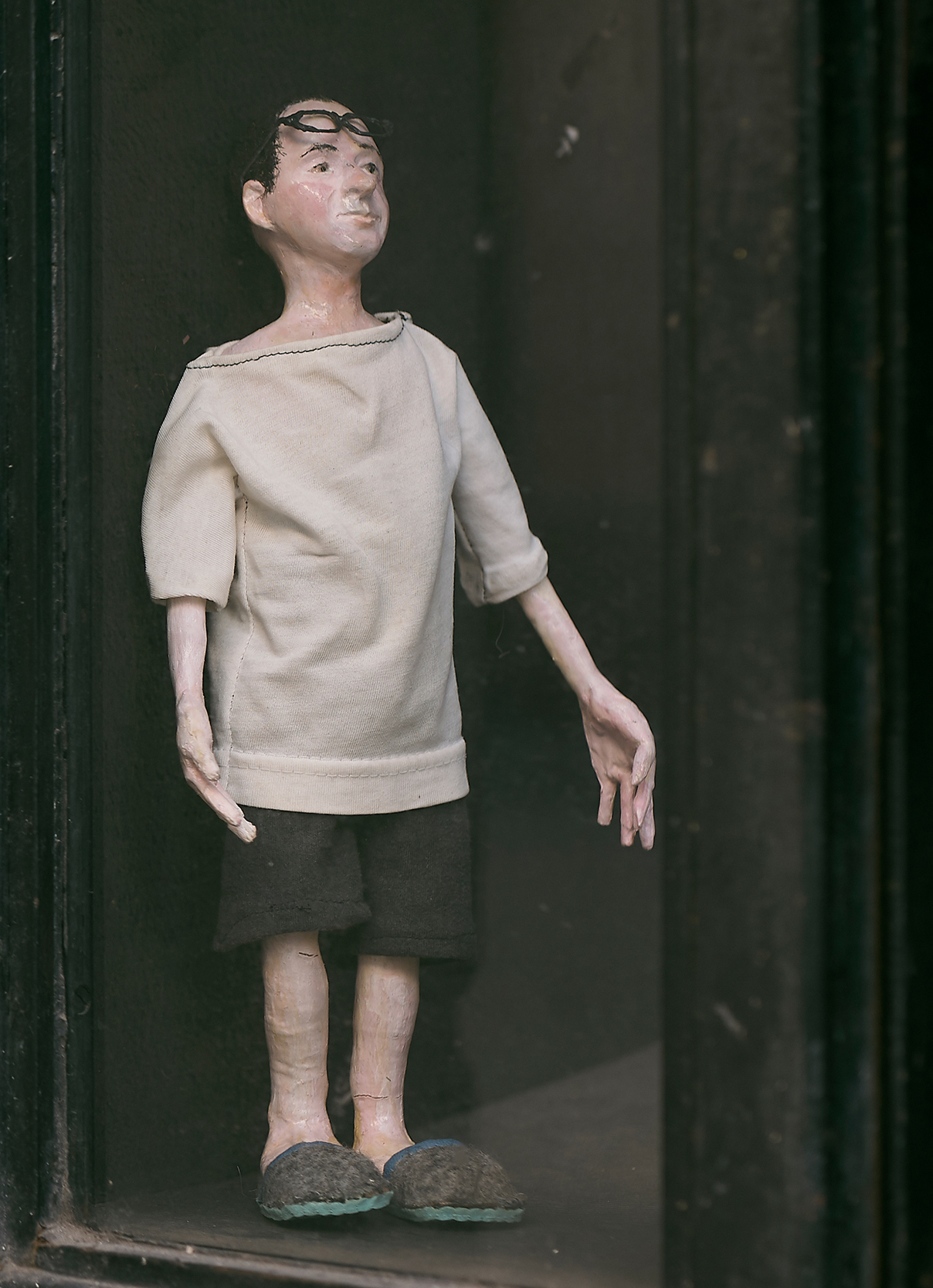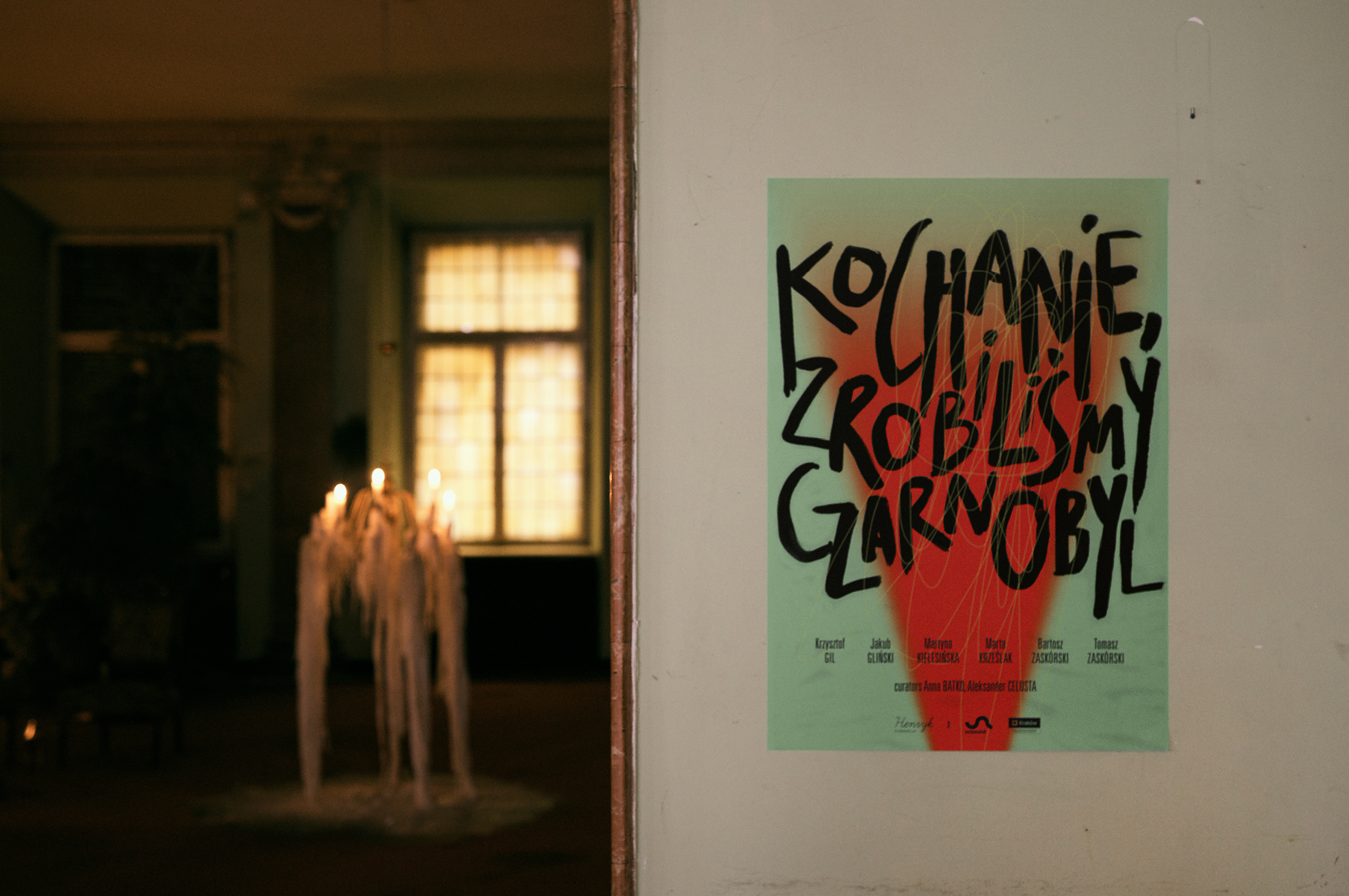Artists: Krzysztof Gil, Jakub Gliński, Martyna Kielesińska, Marta Krześlak, Bartosz and Tomasz Zaskórski
Title: Honey, we built Chernobyl or: a cigar-shaped shelter
Curators: Ania Batko and Aleksander Celusta
Concept: Mateusz Piegza
Graphic design: Renata Motyka
Venue: Henryk Gallery, Krakow (Poland)
Partner: Unsound
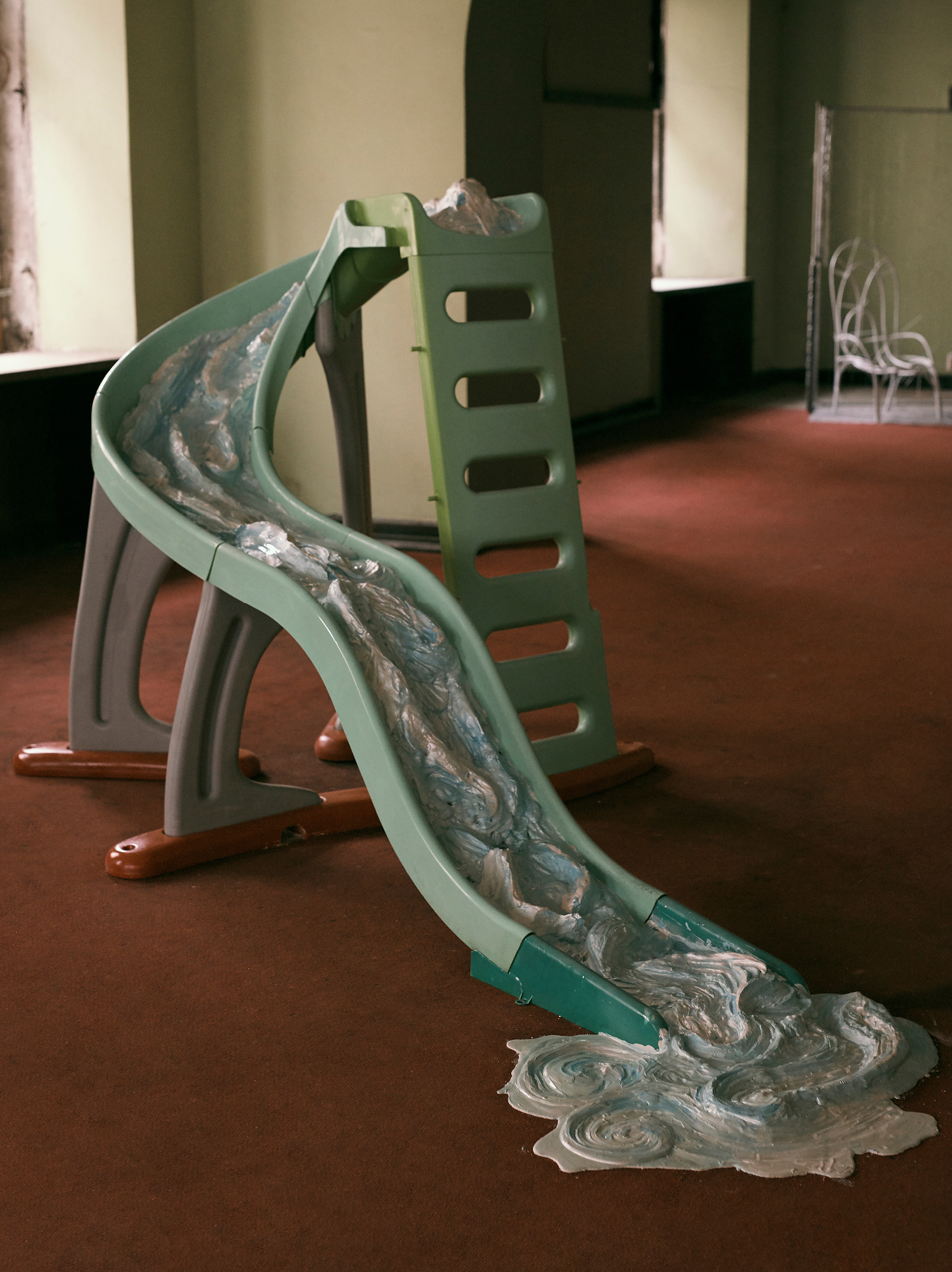
43, Grodzka street. A tenement house in the city centre. Once a home of Adam Męciński, then the Szaniawski family mansion. During the People’s Republic of Poland, it was converted into flats. Later, seat of a club with the alluring name of Dolce Vita, soon destined to disappear, or rather, to transform into another shell of fledgling capitalism. More recently, the building housed a Bingo parlour, decorated with mirrors, hung on pistachio-coloured walls, with a red carpet and a bar top of dark cherry wood. It is an open secret what else went on here, besides the old-fashioned game of Bingo.
If we were to scratch at the outer pastelosis and subsequent layers of paint, superimposed one on another, it is not unlikely that we might discover nineteenth-century murals below. Perhaps we might touch the present, but also the future ruin, let ourselves be charmed by the sticky nostalgia and the poignant leftovers, scattered here and there. Anyway, this exhibition is more of a stage design than an art installation. Setting for a film that was never made, a theatre play that was never written. It is also a kind of dramatized landscape, spiced up with a theatrical, somewhat kitschy flavour. The kind of landscape you would see years later in Chernobyl, with a funfair, a pile of masks and a crowd of plastic dolls – a landscape that isn’t. And never has been. And even so, it is beautiful. We were walking past the greenhouse, the tomatoes so red. You long to eat them, and your soul aches. Said one of the residents of the zone. Apparently, in Greek, ‘nostalgia’ means pain from an old wound. It is an abscess of suffering, our companion between two infinities, writes Michel Houellebecq. And it’s a blessing, time travel, a madeleine and a panel of yellow wall, says Marcel Proust.
Those affected by the plague of nostalgia do not always know what they are longing for. And yet they feel the longing. They rarely prophesy, but they predict. They tell the future from the delaminating cover of thick sugary icing, or better, from monstrous stains of unnaturally red ketchup. They laugh, but always on the brink of tears.
Ruin is primarily a process, a clump of past and future, chewed up and pulverised. The carousel effect, turning round and round. There is a Robert Smithson experiment, in which a child runs around a sandbox filled with white and black sand, until the sand gets mixed, only to regretfully discover in the next scene that if he runs in the opposite direction, the sand will not only fail to return to its previous state, but it will turn even more grey.
There is something very tempting in the idea of the end of the world. You can feel the levity of things final, but also the lightness of freedom, suddenly regained. Just like skipping classes without planning to. The protagonists of “The Architect of Ruins”, the iconic novel by Herbert Rosendorfer from the late 1960s, lock themselves inside an unfinished shelter shaped like a cigar facing downwards, where they feed on gruesome and bleakly humorous anecdotes, spinning a yarn that falls apart, patchy and perforated with numerous gaps. A narrative that never ends, but it prolongs our agony, endlessly. Meanwhile, outside, extermination may be happening. A bloody apocalypse is ensuing. The epilogue continues flaking. Again, the novel titled “The World” may have ended, but the story itself goes on being told. And it won’t stop. And yet, it seems, we have heard it somewhere before.
Tenement house at number 43 in Grodzka street was sold a few months ago. Soon it will undergo thorough revitalization. It will be turned into a hotel or a restaurant. For some time at least, the ruin will be forgotten. It will become a mere memory. Which does not mean that it will not one day return.
